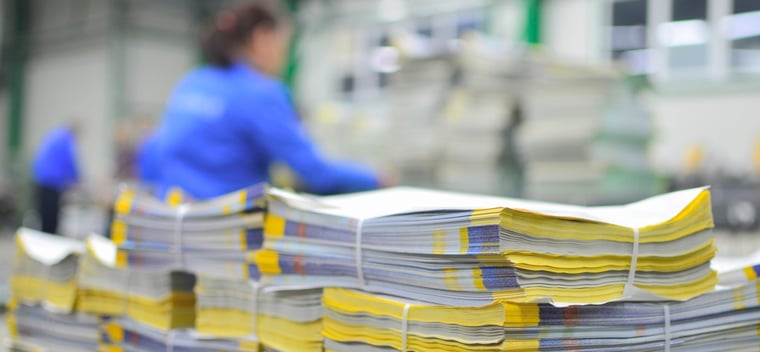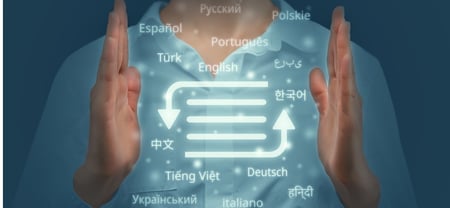Top Requirements for Manufacturing & Engineering Translations

As with a lot of industries, manufacturing and engineering have their own nuances. They have their own jargon, their own level of technical understanding, and their own way of doing things. When you’re working in the industry, it’s easy to navigate these nuances because you live and breathe the sector every day. And you do it in your own language. But what about if you’re building a presence in Stockholm and need to translate your material from English into Swedish?
Sounds like a daunting prospect. After all, manufacturing and engineering are all about precision, so how are you going to know everything is translated perfectly in Swedish?
At LinguaLinx, as a Language Services Provider (LSP), we come across clients with these kinds of challenges all the time. We know the industry, and we know how to help companies localize into new markets.
Here are a few of the top things we suggest you consider for translation or localization if you’re in the manufacturing and engineering sector.
Translation Is Much More Than Just Words
Manufacturing and engineering use all forms of media. These need to be considered when looking at a translation project. From technical manuals to supplier contracts to websites to product brochures, videos, and marketing material. Partner with an LSP that has the full range of expertise at their disposal.
Do an audit of the content you need to have translated. Do you have to do it all right away, or could you take a phased approach? To determine the route forward, an LSP will need to get an understanding of how much falls into each of the following categories:
Text
What is the target language? What is the length of the translated text compared to English? Spanish, Italian, French, and Portuguese are often about 20% longer than English, and for German, this figure can rise to 35%.
Imagery
What is the market you’re going into? Is your training for a Muslim region where you’d have to make sure that any imagery within the software is appropriate to their customs on showing skin?
Even if it’s not, this cultural inappropriateness, the more your imagery reflects the world of the user, the more you’re demonstrating that your brand cares about their culture.
Video
Video will need to be adapted to the new language. Is it best to use sub-titles, voice-over, redub the lines with actors that speak in the target language, or reshoot the content completely?
There are pros and cons for each method. Broadly put, reshooting is expensive (but shows you care and could be most accurate), and sub-titles can be done fairly inexpensively (but if your workforce has literacy difficulties, the message could be ineffective).
Audio
Choosing the right audio adaptation method not only impacts the budget but also the authenticity and reception of the message in the target market.
Ensuring clarity and cultural resonance in audio content can greatly enhance user engagement and comprehension.
Industry Experience Is Crucial
Make sure the linguists working on your translations have industry experience. They need to know how the manufacturing and engineering sectors operate, the terminology and language used, and how this applies to the various material that needs translating.
Your LSP should have a roster of translators who know the native and target languages, and who have also worked extensively for businesses like yours. Are they used to the requirements of document control? Do they understand CAD? What about a Field Failure Request (FFR)?
While they might know how to translate the words, understanding their nuanced meanings is crucial, especially since words can take on different connotations in various languages.
Use Tech To Your Advantage
Save time and money by using Artificial Intelligence (AI) powered Machine Translation (MT) to do the bulk of the work for you. MT will do a first pass at the content, meaning your LSP can use the human element of translation, the linguists, to refine the translated content (called post-editing) so it’s totally accurate for your needs.
MT is moving forward in leaps and bounds thanks to AI. A good LSP will be at the forefront of the technological shift and be able to guide you through the advantages while taking care of the various software and processes.
Localize: Don’t Just Talk In Their Language, Talk To Them
What is localization compared to translation? Well, localization is totally immersing your business, through its translated content and communications, into the culture of your new market. It’s getting under the skin of your potential new customers with a targeted approach far beyond just translation.
Heading into South Africa? What area of South Africa? Should your content be in Xhosa, Zulu, or Afrikaans? Another language? How literate is the community? Do you need to consider using more imagery and fewer words? Is it a mainly Christian community? How will this affect your material? All of these are elements to consider, and there are many more that will help make your localization go smoothly.
Simply put, localization is all about the detail in understanding the country, community, and culture you’re heading into.
Lay The Groundwork For Multiple Languages
Your relationship with your LSP is an important one. They shouldn’t just be a supplier; they should be a business partner. They’re there to service your immediate needs but also to be an advisor to help you look to the future and get the most out of your translation budget.
There are a lot of different cost areas in manufacturing and engineering, so lean on your LSP to start looking ahead to see if there is any work that can be done now to help with future expansion plans.
For example, glossaries and term bases can be prepared, or machine translation can be developed to better work with your business the next time a new language is needed.
Be Ready For Any Language
The manufacturing and engineering industries are an exciting, challenging, and multi-faceted. There is a global need for it to flourish and for ideas from all areas of the world to come together. And today, this is happening more than ever. Heading into a new market or picking up a new supplier where it’s advantageous to communicate in another language no longer needs to be a barrier to international operations.
The key is to partner with the right LSP, and they can bring in the right technology and a linguistic team with experience in the sector, make sure all your content is accurately translated and keep an eye on opportunities to help you as you expand into the next territory.
Get A Quote For Your Manufacturing And Engineering Translation Needs
Considering a translation project for your manufacturing or engineering business? Let's discuss your needs in detail.
At LinguaLinx, our consultations are complimentary and come with zero obligations.
Rest assured, with our ISO 17100 and ISO 9001 compliance, coupled with over two decades in the translation industry, your message remains intact and authentic. We've built a legacy of trust with organizations globally, ensuring your content is always in expert hands.






